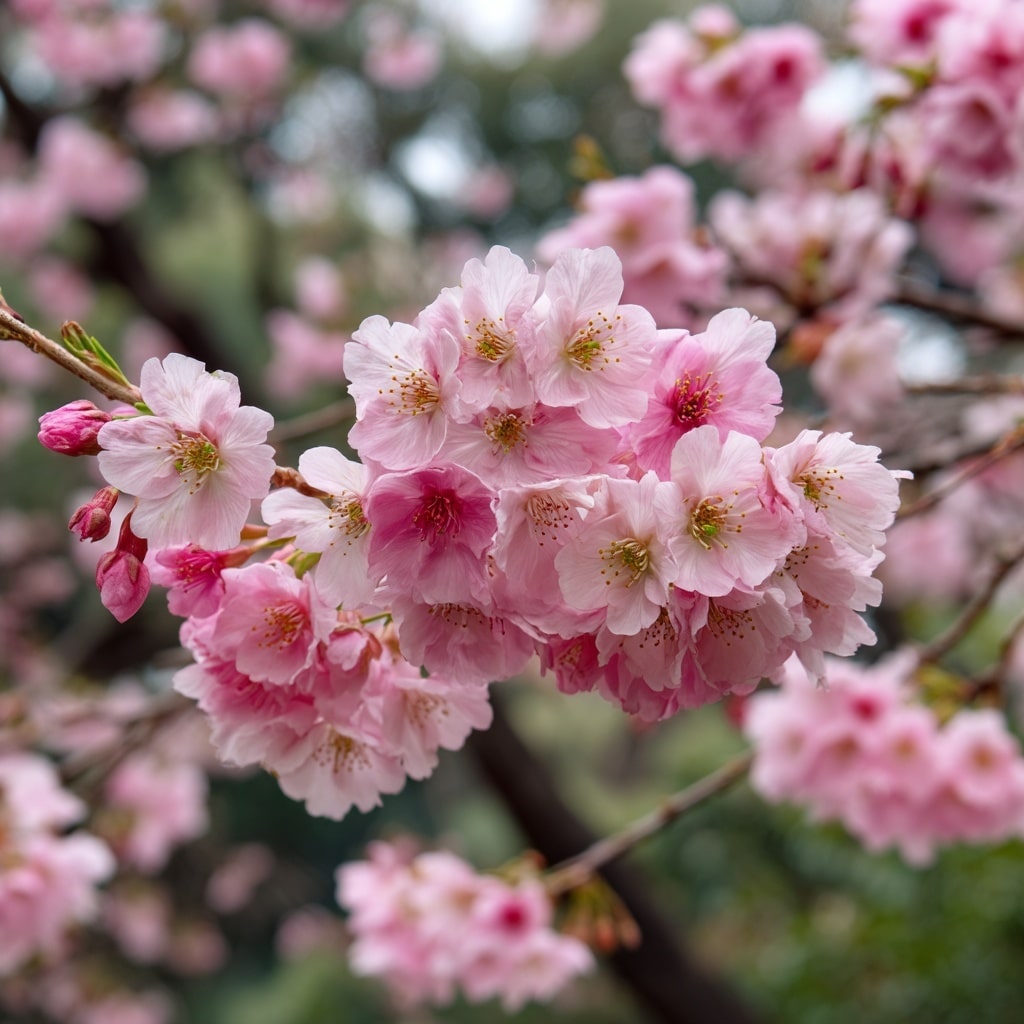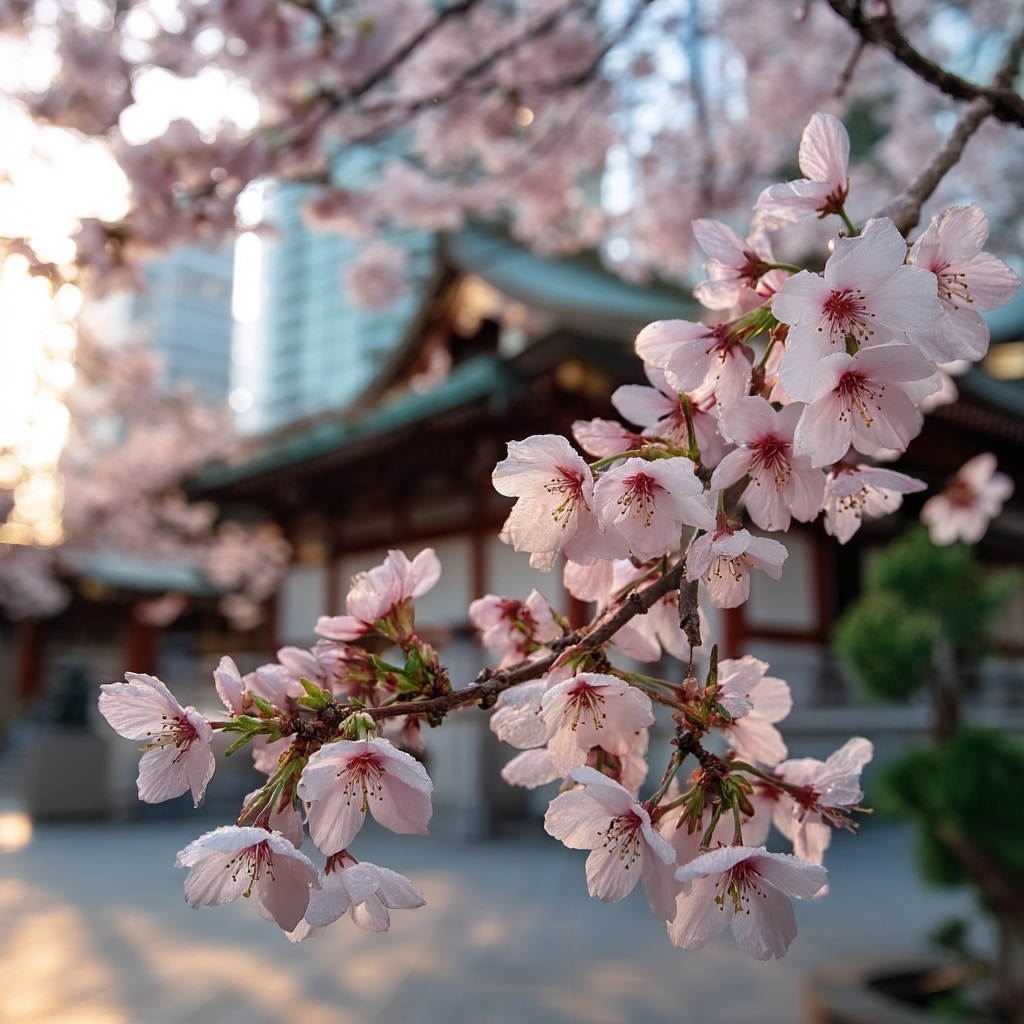Cherry blossom season in Japan is a breathtaking spectacle that captures the hearts of millions each spring. These delicate blooms, known locally as sakura, are far more than just beautiful flowers — they symbolize the fleeting nature of life and hold deep cultural meaning throughout the country. While many travelers are familiar with the iconic pink petals that blanket parks and riverbanks, few realize there are over 200 different cherry blossom varieties in Japan, each with its own unique shape, color, and blooming period. From the widely adored Somei Yoshino to rare yellow-petaled types like Ukonzakura, these blossoms paint Japan’s landscapes in an ever-changing palette from January to May.
In this guide, we’ll take a closer look at 10 remarkable cherry blossom varieties not to miss in Japan — including where and when to find them. Whether you’re planning your first hanami picnic or are a seasoned sakura chaser, this list offers an inspiring glimpse into one of Japan’s most cherished seasonal traditions.
Table of Contents
1. Somei Yoshino (染井吉野)
Among the many cherry blossom varieties in Japan, Somei Yoshino is undoubtedly the most iconic. Recognized for its delicate, pale pink petals that almost appear white, this variety is planted across Japan in parks, schools, shrines, and along riverbanks. Its subtle beauty and soft fragrance have made it the country’s unofficial floral ambassador.
Somei Yoshino trees bloom in unison, creating cloud-like canopies that transform entire landscapes during peak season — typically in mid-April in Tokyo. This synchronized blooming adds to the magic of hanami gatherings, as friends and families come together to enjoy the fleeting beauty under a sky of blossoms.
Interestingly, this variety is also the same one gifted by Japan to the United States, famously blooming around the Tidal Basin in Washington, D.C. each spring.
✅ Best Viewing Spots: Ueno Park (Tokyo), Philosopher’s Path (Kyoto), and the Tidal Basin (Washington D.C.)
✅ Blooming Season: Mid-April
✅ Petal Color: Very pale pink, nearly white
2. Shidarezakura (枝垂桜) — Weeping Cherry
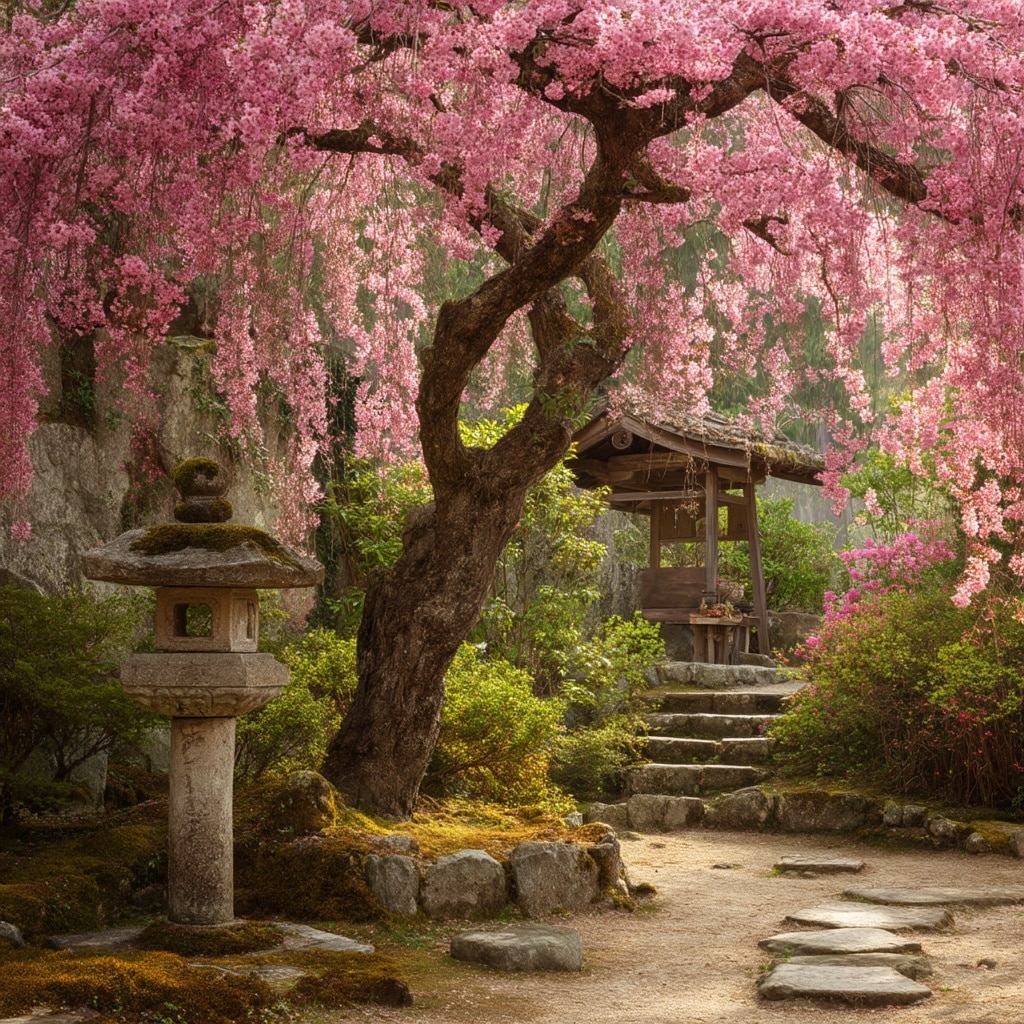
The Shidarezakura, or weeping cherry, stands out among cherry blossom varieties in Japan for its elegant, drooping branches that gracefully cascade like a waterfall of pink petals. These trees resemble weeping willows, and their long, arching limbs create a romantic, almost ethereal atmosphere when in full bloom.
This variety typically blossoms from late March to early April, and the blossoms range from soft pink to a deeper rose hue. The weeping cherry is also one of the oldest sakura types, with historic specimens drawing visitors for centuries. Among the most famous is the Miharu Takizakura in Fukushima Prefecture — over 1,000 years old and designated a national natural treasure.
Shidarezakura trees are often planted near temples or in gardens to create reflective spaces, inviting quiet appreciation of the season’s transient beauty.
✅ Best Viewing Spots: Miharu Takizakura (Fukushima), Maruyama Park (Kyoto), Rikugien Garden (Tokyo)
✅ Blooming Season: Late March to early April
✅ Petal Color: Pink to deep rosy pink
3. Kikuzakura (菊桜)
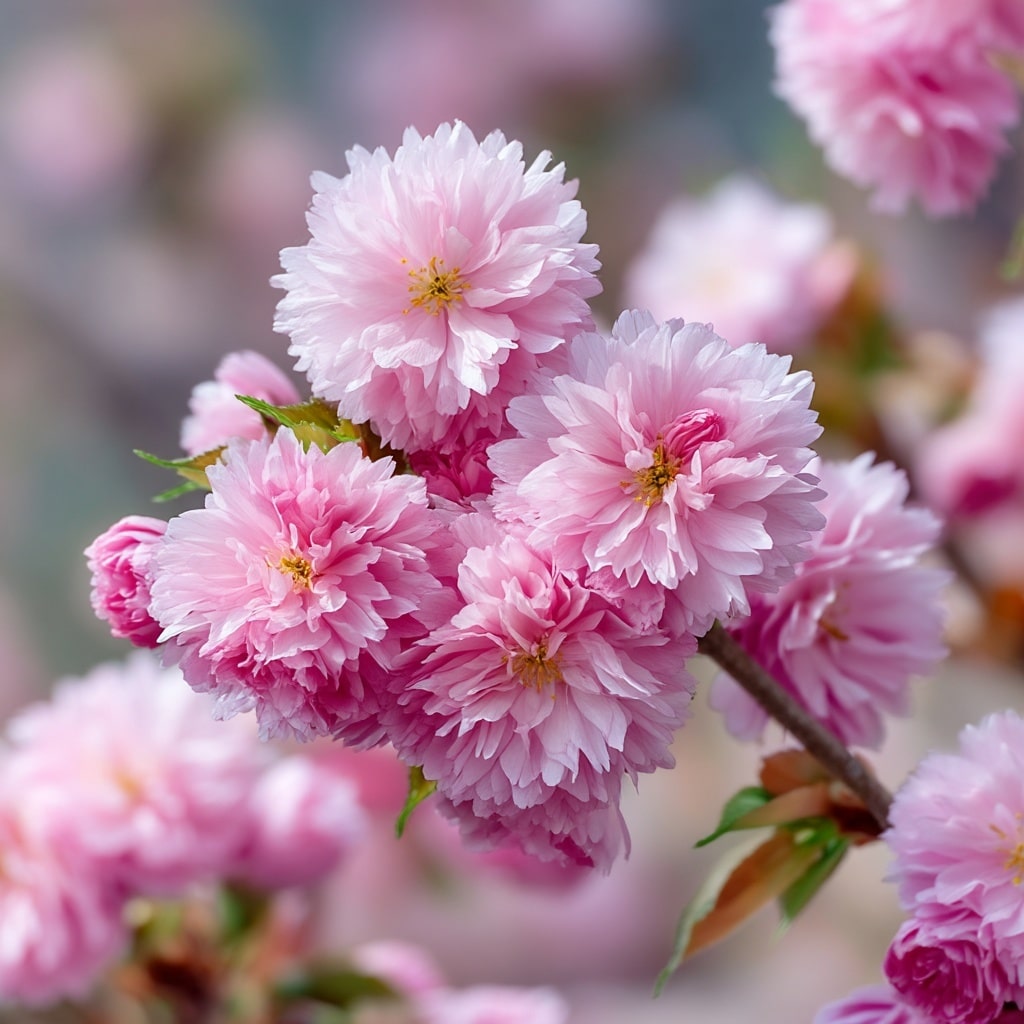
The Kikuzakura, or “chrysanthemum cherry,” earns its name from its resemblance to Japan’s national flower, the chrysanthemum (kiku). Among the most ornate cherry blossom varieties in Japan, this late-blooming tree is easily recognized by its densely layered blossoms, each with up to 130–150 pale pink petals. The full, round appearance gives the tree a rich, almost fluffy texture that makes it truly stand out.
Unlike the more common sakura that bloom in March or April, Kikuzakura typically opens as late as early May, extending the flower-viewing season for those who missed the earlier varieties. Because of its dense petals, this variety has a weightier, fuller bloom that lasts slightly longer than more delicate types.
Kikuzakura trees are often planted in more curated spaces like palace gardens or traditional parks, offering a more tranquil and contemplative hanami experience.
✅ Best Viewing Spots: Shinjuku Gyoen (Tokyo), Kyoto Botanical Garden
✅ Blooming Season: Late April to early May
✅ Petal Count: 130–150 per flower
✅ Petal Color: Pale pink
4. Kawazuzakura (河津桜)
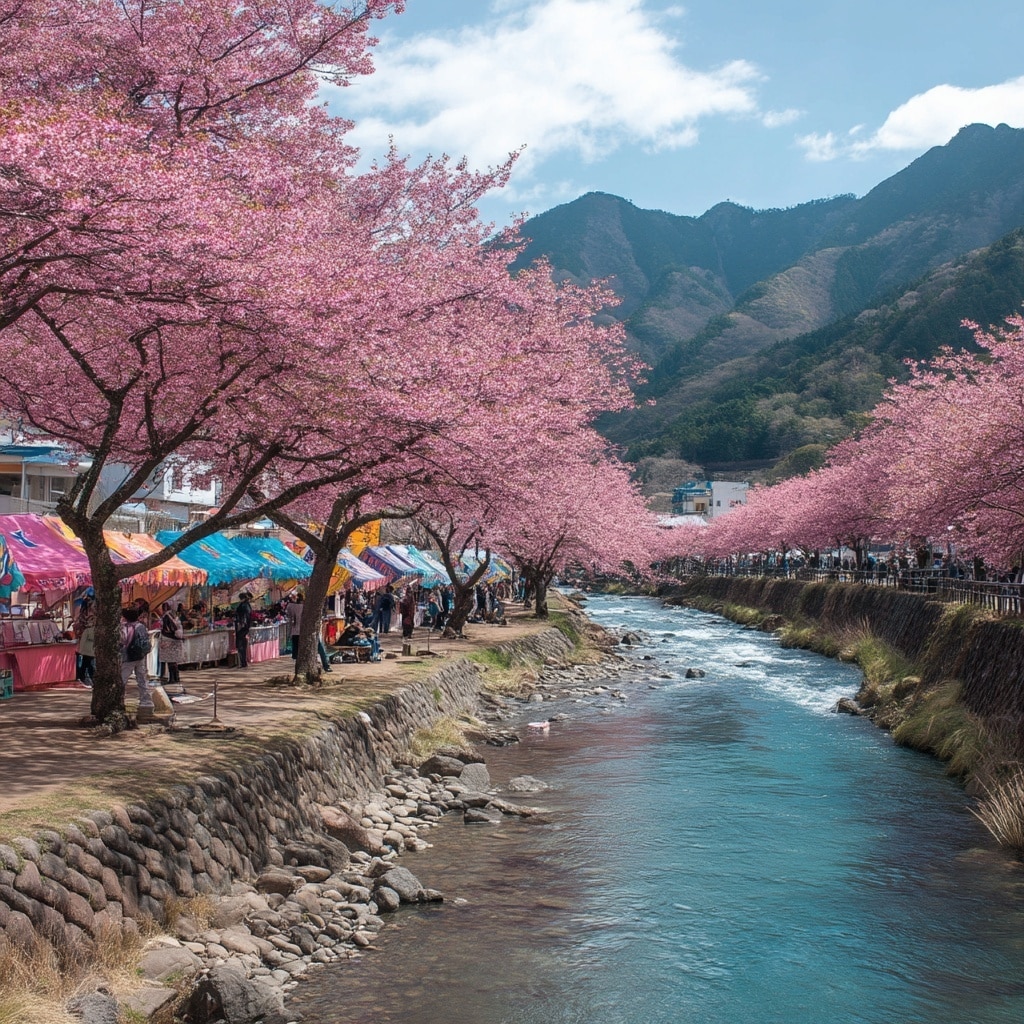
If you’re eager to catch the cherry blossom season before the crowds descend, the Kawazuzakura is your go-to variety. Native to the town of Kawazu on the Izu Peninsula, this wild sakura species is known for its early blooming period, with flowers beginning to open as early as mid-February and peaking by early March.
Kawazuzakura trees are easily identifiable by their vibrant pink petals and slightly larger blossoms. Unlike the ephemeral nature of Somei Yoshino, the Kawazuzakura blooms tend to linger for nearly a month, offering a more relaxed and extended viewing experience.
Every year, over a million visitors travel to Kawazu to attend the Kawazu Cherry Blossom Festival, a charming event lined with sakura trees, food stalls, and traditional performances — all set against the backdrop of spring’s first blush.
✅ Best Viewing Spots: Kawazu Town (Shizuoka), Minami-Izu
✅ Blooming Season: Mid-February to early March
✅ Petal Color: Deep to bright pink
✅ Special Feature: Long bloom duration
5. Ichiyo (一葉)
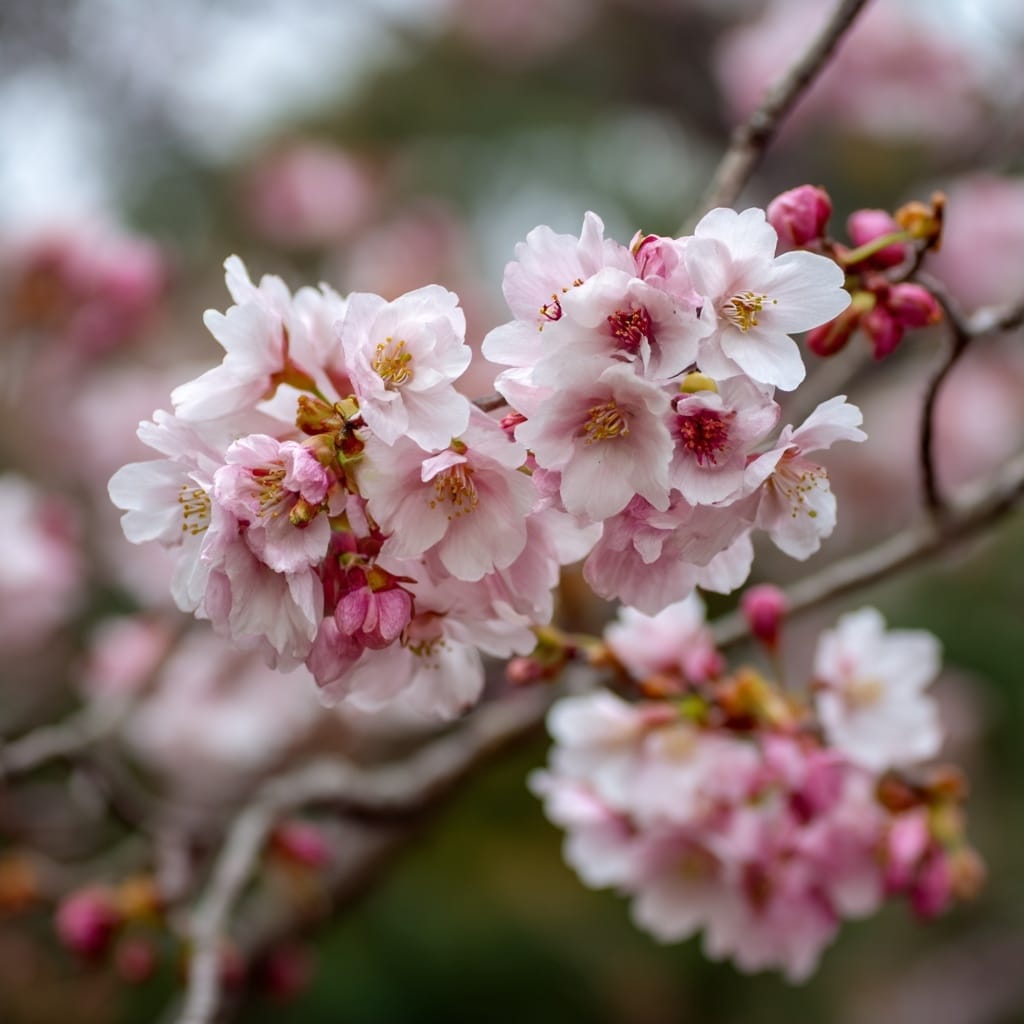
Graceful and charming, the Ichiyo variety is one of the most beloved cherry blossom trees in Japan, especially admired for its double-layered petals and its soft, fluffy appearance. The name Ichiyo, meaning “one leaf,” refers to the single green pistil in the center of each bloom, which closely resembles a tiny leaf peeking through the petals.
Each blossom features 20 to 30 pale pink petals, arranged in layers that give the flower a full, rounded shape. Ichiyo trees tend to bloom in mid-April, slightly later than Somei Yoshino, making them a delightful follow-up for those chasing the season a little longer.
Historically, the leaves of the Ichiyo were once used to flavor a traditional cherry-based drink, though today the variety is most appreciated for its serene beauty. A popular spot to view these blooms is the Imperial Palace East Gardens, where a handful of Ichiyo trees sit gracefully among other sakura types.
✅ Best Viewing Spots: Imperial Palace East Gardens (Tokyo), Sumida Park
✅ Blooming Season: Mid-April
✅ Petal Count: 20–30 per flower
✅ Petal Color: Pale pink with green pistil center
6. Kanhizakura (寒緋桜)
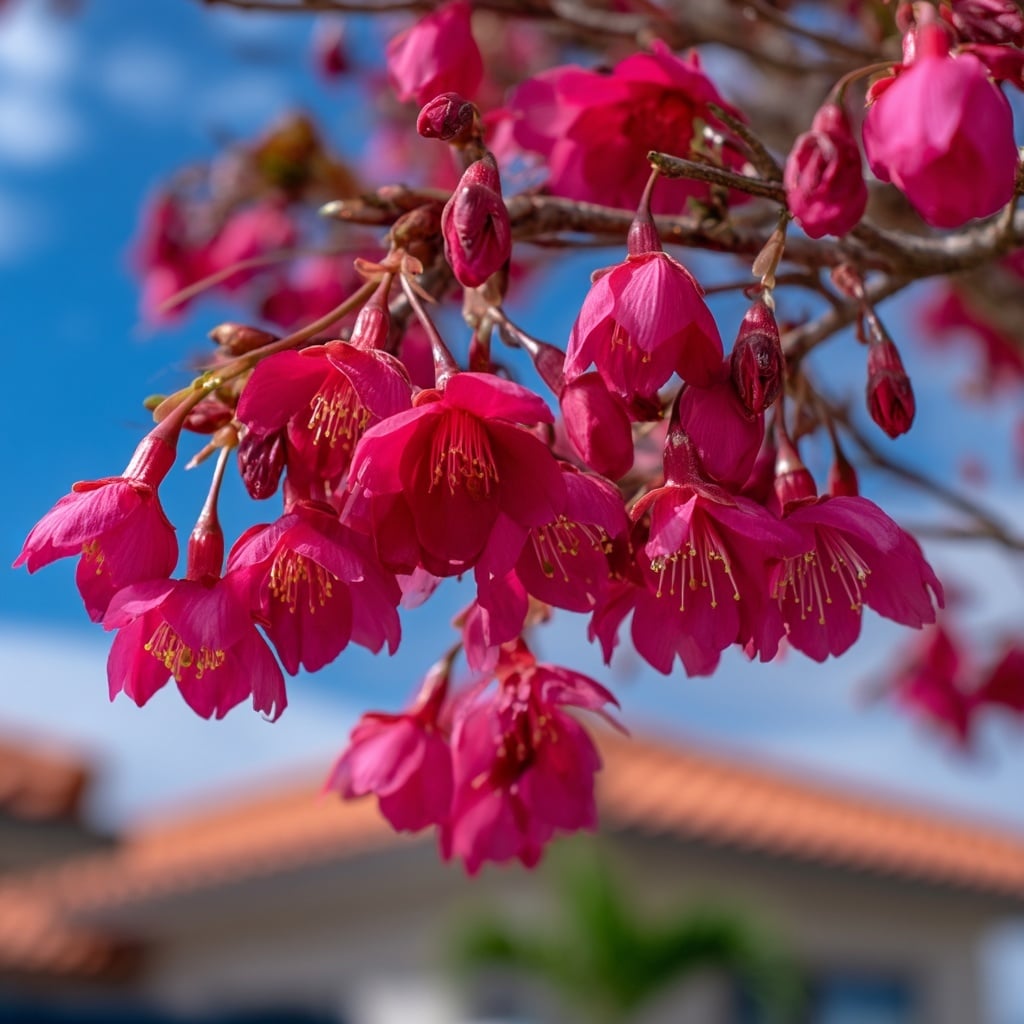
Among the most striking cherry blossom varieties in Japan, Kanhizakura is known for its deep fuchsia petals and distinctive bell-shaped flowers. Unlike the soft pastels of most sakura, this bold variety brings a dramatic splash of color to early spring landscapes, particularly in the Ryukyu Islands and southern Japan.
Kanhizakura trees typically bloom in January to March, depending on the region. In Okinawa, they can flower as early as mid-January, marking the earliest cherry blossom season in the country. Their hardy nature allows the blooms to last up to a month, even in milder climates.
These blossoms are celebrated at the Nago Cherry Blossom Festival, where they line castle grounds and hilltop parks, offering stunning views of the surrounding islands. In mainland Japan, Kanhizakura can also be seen in places like Inokashira Park in Tokyo.
✅ Best Viewing Spots: Nago Castle (Okinawa), Yaedake Sakura Forest, Inokashira Park (Tokyo)
✅ Blooming Season: January (Okinawa) to March (Tokyo)
✅ Petal Color: Deep pink to fuchsia
✅ Special Feature: Bell-shaped flowers with longer-lasting blooms
7. Ukonzakura (鬱金桜)
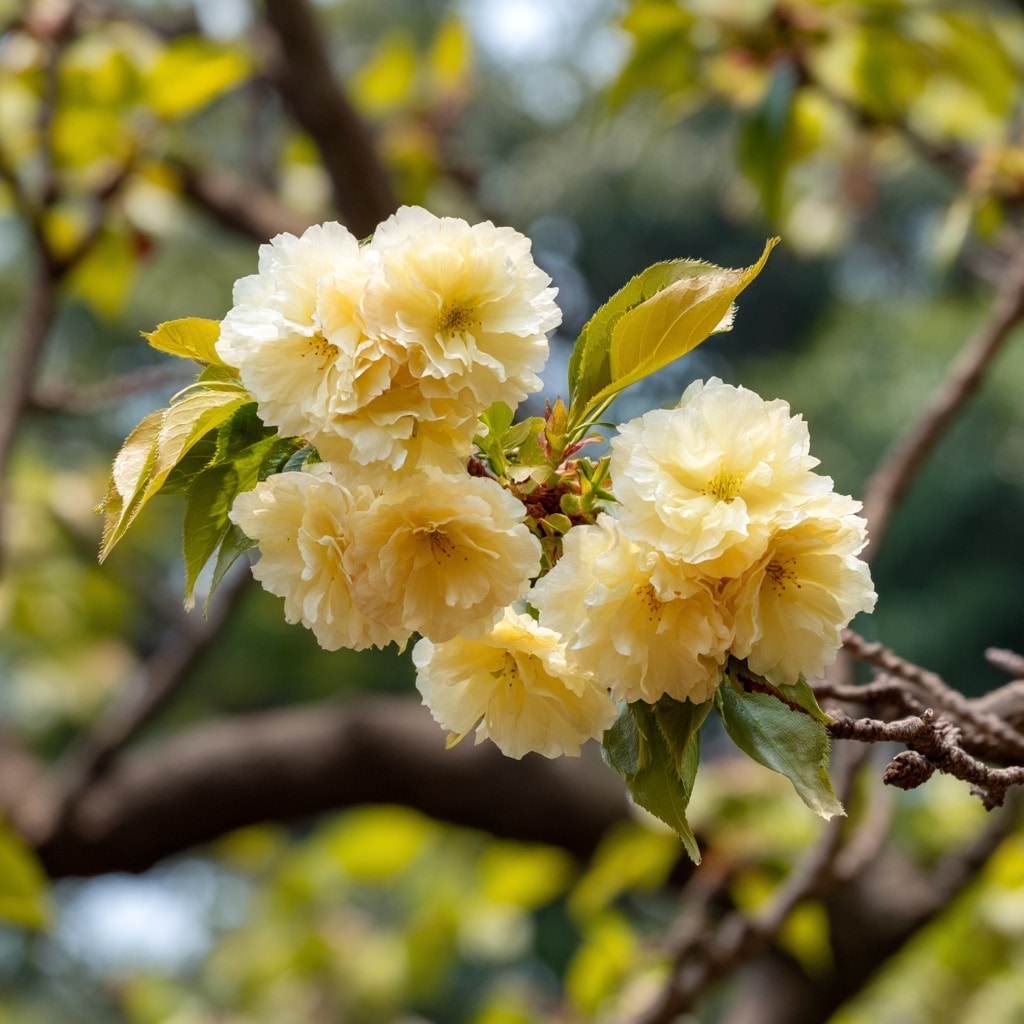
For those looking to see something truly unusual among cherry blossom varieties in Japan, Ukonzakura offers a delightful surprise. Unlike the typical pink and white tones of most sakura, Ukonzakura boasts pale yellow petals — a rare hue that immediately sets it apart.
The name Ukon means turmeric in Japanese, referencing the soft yellow tint of the flowers that resembles the spice. Each bloom features around 10–15 petals, forming elegant, semi-double blossoms. Ukonzakura typically blooms in mid-April, making it a mid-to-late season variety.
This rare tree can be found in a few select locations, most notably in the Koishikawa Botanical Garden in Tokyo. The subtle color and refined structure of Ukonzakura have earned it a place among sakura enthusiasts’ most-wanted varieties.
✅ Best Viewing Spots: Koishikawa Botanical Garden (Tokyo), Kyoto Gyoen National Garden
✅ Blooming Season: Mid-April
✅ Petal Color: Pale yellow
✅ Special Feature: Unique turmeric-colored petals
8. Okame (おかめ桜)
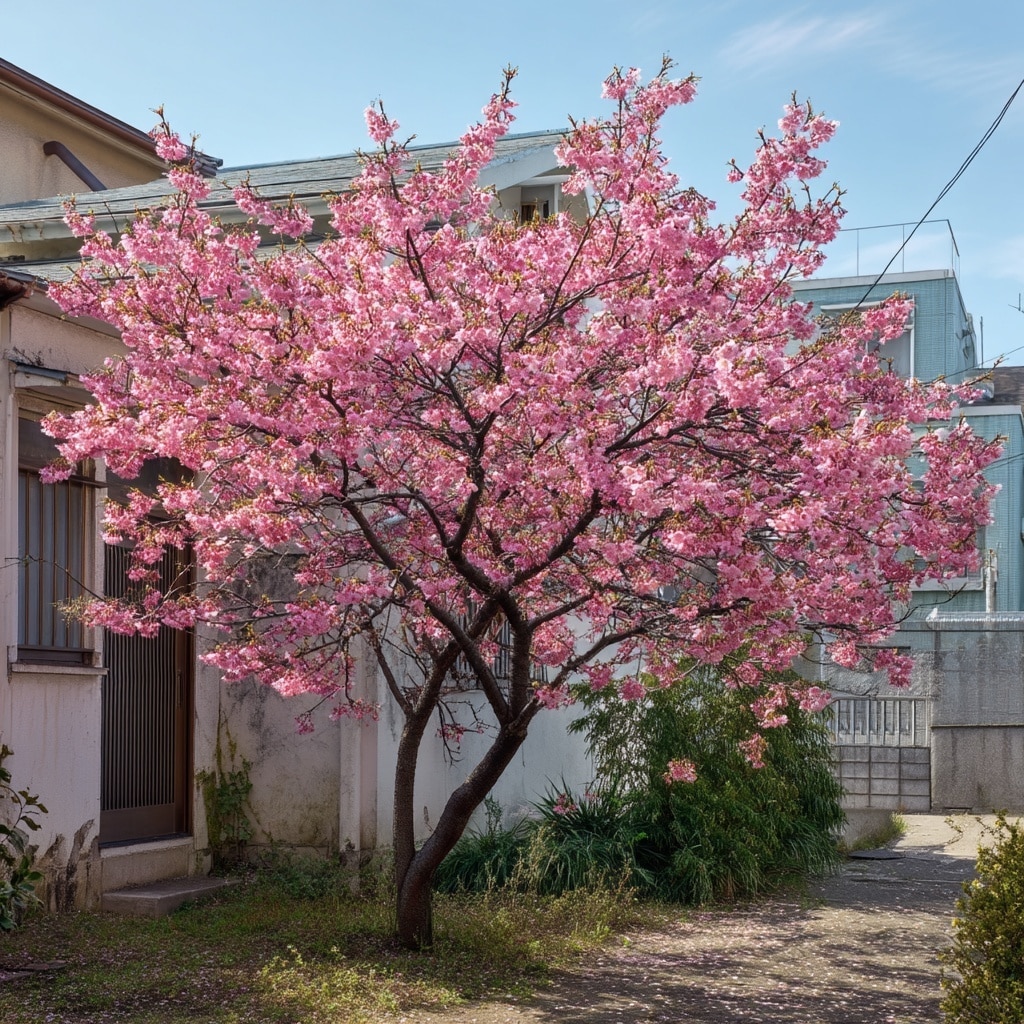
Petite yet vibrant, the Okame Sakura is a charming hybrid variety that’s both early blooming and ideal for small spaces. It was developed by a British botanist, Collingwood Ingram, who crossed two wild species to create a tree that combined beauty, resilience, and compact growth — perfect for home gardens and urban landscapes.
Okame blossoms usually appear in early March, well before the more common varieties like Somei Yoshino. The flowers are deep pink, with a gradient of color that starts rich in the center and softens toward the petal edges. Its compact size makes it a favorite for lining city streets or planting in backyards, where it offers a cheerful preview of spring.
Named after Okame, a Japanese goddess of good fortune and mirth, this variety reflects joy and celebration — making it a delightful addition to both traditional and modern hanami experiences.
✅ Best Viewing Spots: Yoyogi Park (Tokyo), neighborhood gardens, public streets
✅ Blooming Season: Early March
✅ Petal Color: Bright to deep pink
✅ Special Feature: Small stature, ideal for home or urban planting
9. Fugenzou (普賢象桜)
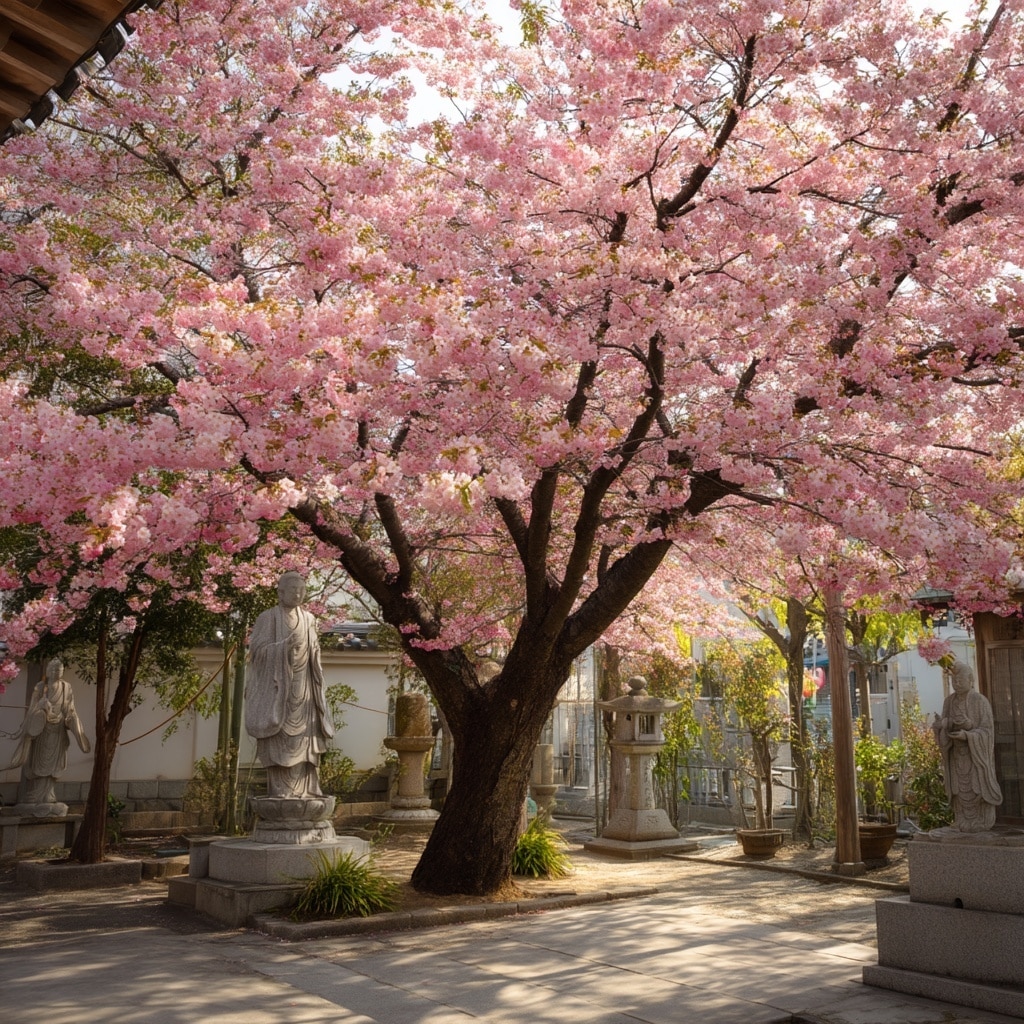
With its luxurious, densely petaled blooms, the Fugenzou variety is one of the most visually stunning cherry blossom types in Japan. Each flower contains 25 to 50 petals, giving it a voluminous, layered appearance that resembles ruffled fabric or even elephant ears — which is precisely where its name originates.
Fugen refers to Samantabhadra, a revered bodhisattva in Buddhist tradition, who is often depicted riding a white elephant (zou in Japanese). This spiritual connection gives the Fugenzou cherry blossoms an air of elegance and symbolism that goes beyond simple aesthetics.
These blooms appear in late April, making them one of the last to flower in the season. Their soft pink color deepens as the petals age, creating a striking contrast on the branches as the bloom matures. The blossoms also emit a mild, pleasant fragrance, enhancing the experience of hanami in late spring.
✅ Best Viewing Spots: Shinjuku Gyoen (Tokyo), Osaka Castle Park
✅ Blooming Season: Late April
✅ Petal Count: 25–50 per flower
✅ Petal Color: Soft pink, deepening over time
✅ Special Feature: Buddhist-inspired name and symbolism
10. Edohigan (江戸彼岸)
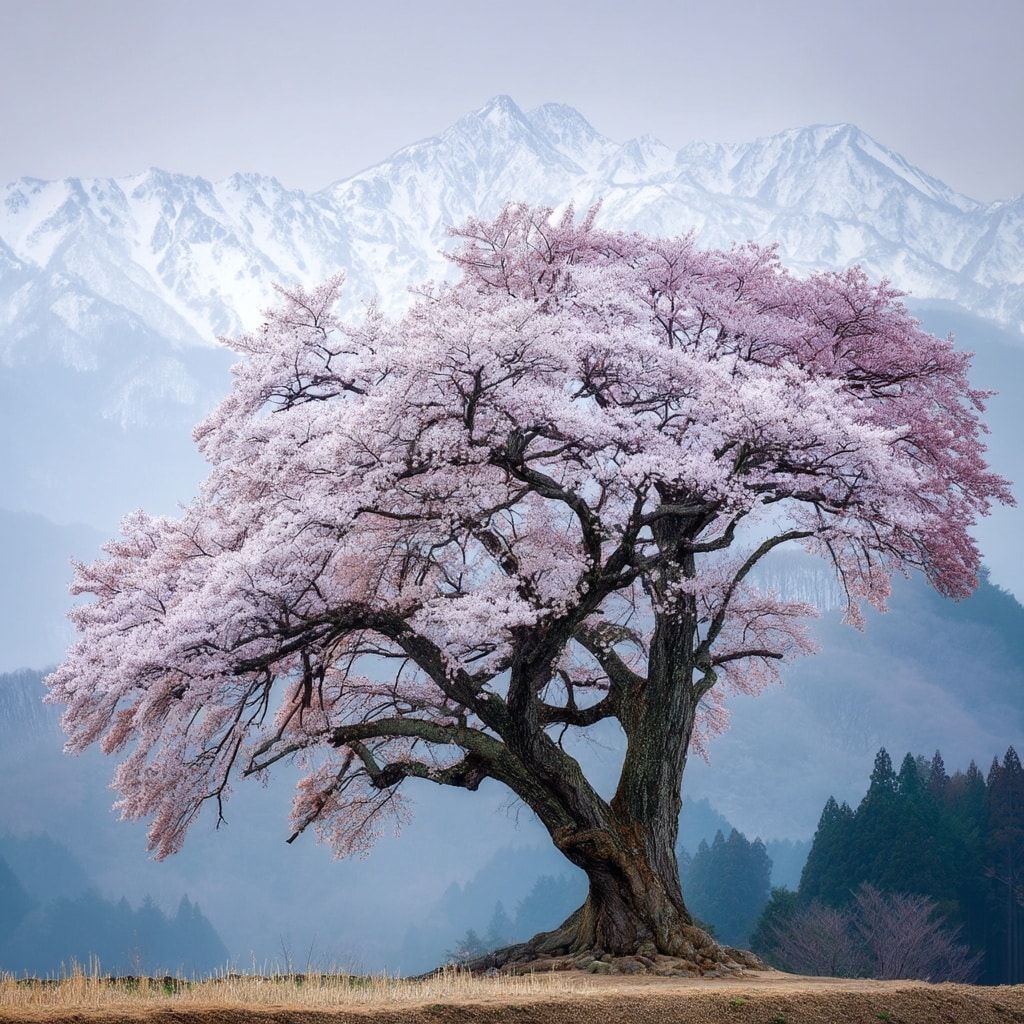
Completing the list of must-see cherry blossom varieties in Japan is the timeless Edohigan, one of the oldest and most enduring sakura types. Named after the spring equinox (Higan), this variety is celebrated not only for its beauty but also for its resilience and longevity — with some trees living well over a thousand years.
Edohigan trees bloom in mid-March, making them one of the earliest flowering varieties in the season. The blossoms emerge in vibrant pink but soon fade to white, a transformation that mirrors the transient nature of life — a central theme in Japanese cherry blossom culture. Their petals are small and delicate, often fluttering quickly to the ground in a poetic display.
Japan’s oldest known cherry tree, the Jindai-zakura in Yamanashi Prefecture, is an Edohigan believed to be over 2,000 years old, and still blooms every spring — a living testament to the endurance and quiet strength of this iconic tree.
✅ Best Viewing Spots: Yamanashi (Jindai-zakura), Kyoto’s Daigoji Temple, Mt. Yoshino
✅ Blooming Season: Mid-March
✅ Petal Color: Pink turning white
✅ Special Feature: Longest lifespan among cherry blossoms
Conclusion
From the ethereal Somei Yoshino to the rare golden petals of Ukonzakura, each cherry blossom variety in Japan offers a unique way to experience the fleeting magic of spring. Whether you’re traveling for an early bloom in Okinawa, enjoying a hanami picnic under a Shidarezakura, or marveling at a thousand-year-old Edohigan, the beauty of sakura lies not only in their appearance but in the emotions they stir — reflection, joy, and an appreciation for life’s impermanence.
To make the most of cherry blossom season, plan your trip according to bloom times, visit diverse regions, and embrace the centuries-old tradition of hanami. Each variety tells a story, and together they create a seasonal symphony that draws people from around the world, year after year.

